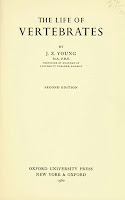But in the past we often came out with such trite and unthinking statements that animals reproduced for ‘the good of the species’ or this and that adaptation was important for ‘the survival of the species’. Such an implication of natural selection at the species level—even when selection at the individual level was implicit in Neo-Darwinism—was commonplace, glibly trotted out not only by popularizing natural historians but by professional biologists. But there came a major change in attitude in the early 1960s when biologists in the street actually started to think about what they had been saying for years. Wynne-Edwards came up with his now widely derided ideas that amounted to group selection in his 1962 book, Animal Dispersion in Relation to Social Behaviour. The upshot of that and the correspondence and comments on the simple refutation by David Lack in Britain and then by G.C. Williams in the U.S.A. meant the beginning of the end ‘for the survival of the species’. BBC natural history script writers and commentators are now virtually flawless by using such phrases as ‘successful in passing on his or her genes’.
Richard Dawkins remarked in an obituary of Williams who died in 2010:
Neo-Darwinism had fallen into lazy habits since the glory days of Ronald Fisher and the Modern Synthesis. The loose, intellectually shoddy idea of “group selection” was rife, and Williams dispatched it.
Rife in certain quarters certainly but I do remember E.T.B. Francis dinning it in to us during his lectures on vertebrates in 1963-64 in Sheffield that natural selection acts on the individual.
But where were the notions of selection at levels beyond that of the individual promulgated? Well, I was surprised to find it in the most famous and influential textbook of my generation.
J.Z. Young’s Life of Vertebrates was and still is deservedly praised for its revolutionary approach. In his obituary for the Royal Society, Brian Boycott (1924-2000) wrote on the background to the book and of the author’s intentions:
G.R. de Beer, became his tutor; E.S. Goodrich was the Professor of Zoology. Both were leading comparative anatomists who continued the early post-Darwinian tradition largely associated with e.g. K. Gegenbauer, F. Balfour, E. Haeckel and K.E. von Baer. They regarded the principal task of zoological research to be to establish firm evidence for the doctrine of organic evolution (Goodrich 1930). J.Z. found the formal courses dull, but in retrospect considered the intellectual rigour of comparative anatomical reasoning to have provided 'an excellent foundation for a lifetime of research', and, 'as the science of biology woke up during the subsequent decades I found that the morphology I had learned was an admirable basis for understanding the advances of genetics and embryology'. He also attended lectures on the 'newly developing subjects' of ecology (C. Elton) and genetics (E.B. Ford). J.R. Baker taught him histology. Some evidence of the style and matter of the main courses may be gleaned from the books by de Beer (1928, 1940) and Goodrich (1930). Reading them makes it easy to understand why J.Z. as a teacher added and always emphasized the functional and behavioural aspects of morphology and soon began drafting his first textbook, The Life of Vertebrates. Interrupted by the Second World War, this did not appear in print until 1950. The preface is a fascinating essay on the major, largely European, comparative vertebrate zoology texts that he sought to re-express in terms of the life of vertebrates and the evolution of that life. His book was very well-received; it was a breath of fresh air. There was a third English edition in 1981, and, after 48 years, it still remains in print. In old age, J.Z. wistfully remarked that he seemed better known for this book than his research. He perhaps did not fully realize how extraordinarily influential it has been over many years in keeping a lot of people interested in biology, and how much teachers have relied on it as a text. It is one of the few textbooks ever written that can be read from cover to cover with profit and pleasure.
But there is this strange statement in his introductory chapter under the sub-heading, Living things tend to preserve themselves, which is a bit about selection, a bit what we would now call evo-devo and a bit about species concepts:
Though we speak of ‘individuals’ they are no more the final units than are the cells, the heart, or the brain, the bones, hair, or nails. A whole interbreeding population is the unit of life that tends to preserve the type, assisted in social species, by individuals that play a part in life without participation in reproduction, such as worker bees.
In J.Z. Young’s first (1950) and second (1962) editions I think we get some clue about his thinking from Boycott’s obituary. JZ began his book in the 1930s before and during concretion of the Modern Synthesis and I think this is where it shows. This line of reasoning had gone by the final, 1981, edition. Selection on individuals was the only level considered and while current evolutionary scholars would take exception to the notions of Stephen Jay Gould being given prominence, textbooks do after all reflect, rightly or wrongly, ideas that were being discussed at the time of their writing together with an active selection of what the author considers important for the next generation of biologists.
J. Z Young’s textbook has to be seen as a brilliant revolt against the orthodoxy of zoological thinking and practice in the later decades of the 19th Century and the early decades of the 20th. While one can point out the misconceptions that it contains, the basic message that J.Z. put across is as relevant today as it was when he wrote it:
…every biologist must know as much as possible of the life of the whole organism with which he deals…
 |
| John Zachary Young 1907-1997 from here |






